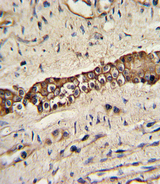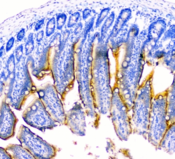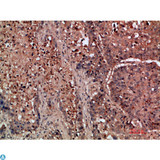order histories, retained contact details for faster checkout, review submissions, and special promotions.
Forgot password?
order histories, retained contact details for faster checkout, review submissions, and special promotions.
Location
Corporate Headquarters
Vector Laboratories, Inc.
6737 Mowry Ave
Newark, CA 94560
United States
Telephone Numbers
Customer Service: (800) 227-6666 / (650) 697-3600
Contact Us
Additional Contact Details
order histories, retained contact details for faster checkout, review submissions, and special promotions.
Forgot password?
order histories, retained contact details for faster checkout, review submissions, and special promotions.
DDR2
discoidin domain receptor tyrosine kinase 2
Receptor tyrosine kinases (RTKs) play a key role in the communication of cells with their microenvironment. These molecules are involved in the regulation of cell growth, differentiation, and metabolism. In several cases the biochemical mechanism by which RTKs transduce signals across the membrane has been shown to be ligand induced receptor oligomerization and subsequent intracellular phosphorylation. This autophosphorylation leads to phosphorylation of cytosolic targets as well as association with other molecules, which are involved in pleiotropic effects of signal transduction. RTKs have a tripartite structure with extracellular, transmembrane, and cytoplasmic regions. This gene encodes a member of a novel subclass of RTKs and contains a distinct extracellular region encompassing a factor VIII-like domain. Alternative splicing in the 5' UTR results in multiple transcript variants encoding the same protein.
| Gene Name: | discoidin domain receptor tyrosine kinase 2 |
| Family/Subfamily: | Protein Kinase , DDR/TKT |
| Synonyms: | DDR2, CD167b antigen, Discoidin domain receptor 2, Hydroxyaryl-protein kinase, MIG20a, Tyrosine-protein kinase TYRO10, NTRKR3, TYRO10, Tyrosylprotein kinase |
| Target Sequences: | NM_006182 NP_006173.2 Q16832 |
Publications (6)














If you do not find the reagent or information you require, please contact Customer.Support@LSBio.com to inquire about additional products in development.











